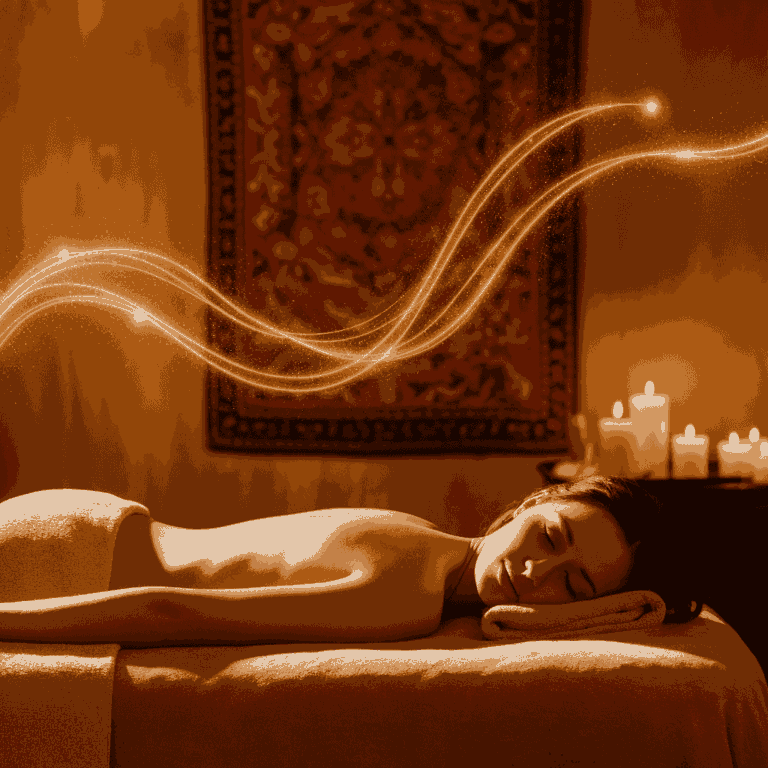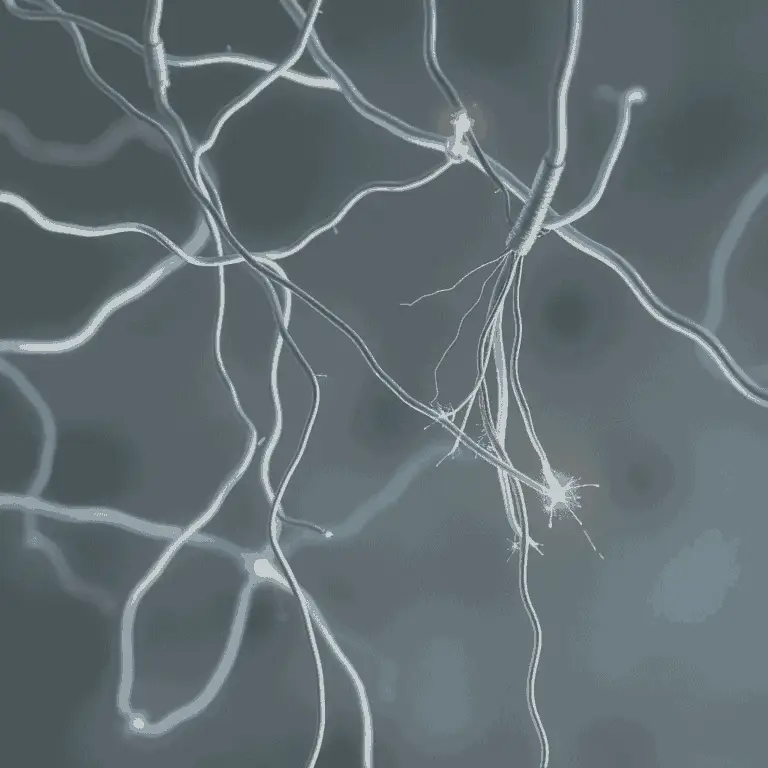
Trauma and Massage Therapy
Trauma resides not only in the mind but also in the tissues of the body. While much of the modern discourse around trauma revolves around psychological interventions, mounting evidence reveals that physical therapies—especially massage—can significantly support healing. Massage therapy, when administered with trauma-informed sensitivity, acts as both a physiological intervention and a medium of emotional reconnection. It soothes the dysregulated nervous system, facilitates emotional release, and enables reconnection to one’s body—a critical task for those affected by traumatic experiences.
In the Western biomedical model, trauma has long been addressed through cognitive and pharmacological interventions. Yet, these approaches can sometimes neglect the body’s vital role in trauma storage and recovery. This gap has inspired an integrative movement in mental health care, where somatic therapies—massage, in particular—are re-emerging as essential modalities for trauma survivors. Massage therapy’s potential lies not only in softening muscles or increasing circulation but also in rekindling the body’s innate capacity to feel safe, grounded, and whole.
Bringing trauma-informed massage into the healing equation requires more than technical skill. It demands an understanding of neurobiology, psychological safety, and human connection. The goal is not merely relaxation but restoration: to help the body unlearn chronic patterns of bracing, disconnection, and fear. In doing so, massage therapy becomes more than a luxury—it transforms into a profound tool for recovery.
Massage Therapy for Trauma Recovery
Massage therapy for trauma recovery involves using structured, intentional touch to assist individuals in healing from emotional, physical, or psychological trauma. Unlike conventional massage practices aimed at relaxation or sports recovery, trauma-informed massage centers the therapeutic relationship and the client’s nervous system regulation. It emphasizes safety, consent, and pacing, ensuring that the body is approached as a container of lived experience rather than a mechanical structure in need of adjustment.
Physiologically, massage stimulates the parasympathetic nervous system, which helps shift the body out of a hypervigilant state often induced by trauma. Clients may experience improved heart rate variability, reduced cortisol levels, and an increased sense of bodily presence after treatment. This is especially important for individuals who feel dissociated or estranged from their somatic self.
Additionally, massage therapy may serve as a non-verbal language of repair. For clients who have experienced violations of their bodily boundaries—such as in cases of abuse or invasive medical procedures—therapeutic touch conducted with transparency and empathy can begin to restore a sense of agency. According to Moyer, Rounds, and Hannum (2004), massage therapy may lead to significant reductions in anxiety and depression, which are common comorbidities in trauma survivors. However, the uniqueness of trauma-informed massage lies not only in its psychological outcomes but in the relational and physiological safety it restores.
Understanding Trauma: A Psychophysiological Perspective
Trauma is often defined by its psychophysiological impact rather than the event itself. As van der Kolk (2014) explains, trauma is characterized by an inability to move past an overwhelming experience, resulting in a system that remains locked in a cycle of threat perception. This ongoing state of arousal disrupts the autonomic nervous system and embeds itself in both mental cognition and bodily function.
The body’s response to trauma is mediated through the hypothalamic-pituitary-adrenal (HPA) axis, which governs the stress response. Chronic activation of this axis leads to alterations in cortisol production, immune dysregulation, and heightened inflammation. Simultaneously, trauma often results in disconnection from interoceptive awareness—our ability to feel and interpret bodily sensations. This disconnect makes it challenging for individuals to identify or respond to stress appropriately, often contributing to cycles of emotional numbing or hyperarousal.
Massage therapy can intervene in these cycles by enhancing interoceptive awareness and providing somatic cues of safety. According to Scaer (2001), touch-based therapies can stimulate neuroplastic changes by promoting parasympathetic activity, reducing stress hormone levels, and creating sensory experiences that counterbalance the imprint of trauma. Rather than being trapped in a perpetual state of fight, flight, or freeze, the body learns, through safe touch, how to shift toward states of rest, digest, and repair.
The Polyvagal Theory and Massage Therapy
The polyvagal theory, introduced by neuroscientist Stephen Porges (2011), provides a compelling framework for understanding how massage therapy facilitates trauma recovery. According to this theory, the autonomic nervous system consists of three primary branches: the dorsal vagal (immobilization), the sympathetic (mobilization), and the ventral vagal (social engagement). Trauma often results in dominance of the dorsal or sympathetic systems, leading to shutdown or hypervigilance, respectively.
Massage therapy, especially when executed in a safe and attuned manner, activates the ventral vagal complex. This branch is responsible for feelings of safety, connection, and emotional regulation. When the therapist engages the client in a co-regulated state—through voice, eye contact, or grounding techniques—the client’s nervous system begins to recalibrate.
Research by Porges (2011) emphasizes that “safety is the treatment” in trauma work. Massage offers precisely that: a consistent, predictable, and safe experience of contact. Over time, repeated exposure to this regulated state can help “rewire” the nervous system, increasing the individual’s capacity for resilience and social connection. Moreover, vagally mediated physiological changes—like reduced heart rate and increased digestion—support a more comprehensive return to homeostasis.
Somatic Memory and the Body’s Archive
The concept that “the body keeps the score,” popularized by van der Kolk (2014), underscores the idea that trauma is encoded somatically, not just psychologically. Muscle tension, posture, and even movement patterns can reveal unresolved trauma. For example, a survivor of assault may unconsciously tense their shoulders or avoid certain bodily positions associated with the event. These patterns persist long after the conscious memory fades.
Massage therapy can access this somatic archive. When muscles are gently released or fascia is softened, clients may experience emotional reactions—tears, trembling, or even vivid flashbacks. These responses are not regressions but rather evidence that the body is metabolizing stored trauma. In this way, touch becomes a portal to buried memory and, ultimately, to healing.
Clinical evidence supports this view. A study by Price (2005) found that body-oriented interventions that enhance somatic awareness lead to improved psychological well-being among trauma survivors. This underscores the unique value of massage as both a therapeutic and diagnostic tool. When done ethically and patiently, massage can awaken dormant body parts, restore sensory integration, and validate the client’s experience in a profoundly embodied way.
Craniosacral Therapy in Trauma Treatment
Craniosacral therapy (CST), a gentle, non-invasive bodywork modality developed by osteopathic physician John Upledger, has gained prominence for its therapeutic application in trauma treatment. The foundational premise of CST is that subtle manipulations of the craniosacral system—comprised of the membranes and cerebrospinal fluid surrounding the brain and spinal cord—can influence the body’s capacity for self-healing and regulation. This modality is particularly suited for trauma recovery due to its sensitivity, slowness, and focus on facilitating the body’s inherent somatic wisdom without provoking re-traumatization.
One of the defining features of trauma is its tendency to overwhelm the nervous system, leading to defensive patterns of immobilization, hyperarousal, or dissociation. Traditional massage techniques, while beneficial in many contexts, may at times be too stimulating or directive for individuals whose nervous systems are operating in a hypervigilant or shut-down state. In contrast, craniosacral therapy invites a state of deep stillness and neutrality, which allows clients to explore body-based sensations and release held trauma without the need for verbal processing or cognitive recall.
The core mechanism of CST involves the practitioner attuning to the craniosacral rhythm—akin to a pulse—and identifying areas of restriction, asymmetry, or tension. Through subtle holding techniques, often with a pressure no greater than five grams, practitioners support the body in unwinding these restrictions. In trauma survivors, such patterns often reflect protective mechanisms embedded in the body’s fascial and neural networks. For example, chronic tension in the occipital base or sacral area may correspond with stored shock or a defensive posture that developed during a traumatic event.
Empirical research into CST and trauma is still emerging, yet preliminary studies suggest significant promise. A study by Green et al. (1999) reported that CST led to improvements in somatic symptomatology, sleep patterns, and emotional well-being among participants with post-traumatic stress symptoms. These outcomes are thought to result from the therapy’s capacity to down-regulate sympathetic arousal and promote parasympathetic tone—key goals in trauma treatment that align with Porges’ polyvagal theory.
Moreover, CST enhances proprioceptive and interoceptive awareness. As trauma often leads to disconnection from bodily sensations, CST provides a bridge by gently inviting attention back into the body in a manner that feels safe and non-threatening. This subtle somatic reconnection supports the reestablishment of self-agency and bodily ownership—crucial milestones in trauma recovery. The non-verbal nature of CST also provides an inclusive option for clients who struggle with language-based processing due to developmental trauma or cultural barriers.
In therapeutic practice, craniosacral therapy must be delivered with a clear understanding of trauma-informed care principles. The practitioner should establish informed consent, explain each step of the process, and continuously monitor the client’s non-verbal cues. Any signs of dissociation, emotional flooding, or discomfort must be met with grounding techniques and a willingness to pause or stop the session. The goal is not to provoke release but to create a space in which the client’s system feels empowered to let go when it is ready.
In sum, craniosacral therapy offers a uniquely suited modality for trauma treatment, characterized by gentleness, respect for the body’s timing, and deep listening. As understanding of the somatic dimensions of trauma expands, CST stands out as a profoundly effective tool in restoring nervous system balance and reestablishing the foundation for holistic healing.
Conclusion
Massage therapy, when applied through a trauma-informed lens, has the potential to facilitate profound healing in those recovering from both acute and chronic trauma. As this article has demonstrated, the physiological and psychological mechanisms impacted by trauma are accessible through the body’s sensory systems. From stimulating the parasympathetic nervous system to accessing somatic memory through gentle touch, massage therapy provides not just temporary relief but a path toward lasting transformation.
Importantly, practitioners must commit to trauma-sensitive principles—prioritizing consent, fostering safety, and practicing cultural humility. As massage therapy continues to evolve within clinical and mental health settings, interdisciplinary collaboration and research will be vital. Evidence-based protocols and deeper investigation into underrepresented populations will help ensure this modality reaches its full potential.
Ultimately, healing from trauma is not merely about forgetting the past, but about reclaiming the present. Massage therapy, through its power to restore bodily trust and emotional equilibrium, offers survivors a renewed sense of agency, presence, and peace.
References
Green, C., Martin, C. W., & Bass, H. (1999). Craniosacral therapy for the treatment of post-traumatic stress disorder: A pilot study. Journal of Alternative and Complementary Medicine, 5(1), 83–90. https://doi.org/10.1089/acm.1999.5.83
Moyer, C. A., Rounds, J., & Hannum, J. W. (2004). A meta-analysis of massage therapy research. Psychological Bulletin, 130(1), 3–18. https://doi.org/10.1037/0033-2909.130.1.3
Porges, S. W. (2011). The polyvagal theory: Neurophysiological foundations of emotions, attachment, communication, and self-regulation. W. W. Norton & Company.
Price, C. J. (2005). Body-oriented therapy in recovery from child sexual abuse: An efficacy study. Alternative Therapies in Health and Medicine, 11(5), 46–57.
Scaer, R. C. (2001). The body bears the burden: Trauma, dissociation, and disease. Haworth Medical Press.
van der Kolk, B. A. (2014). The body keeps the score: Brain, mind, and body in the healing of trauma. Viking.









